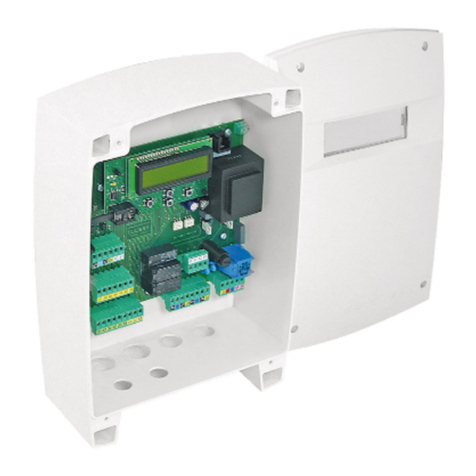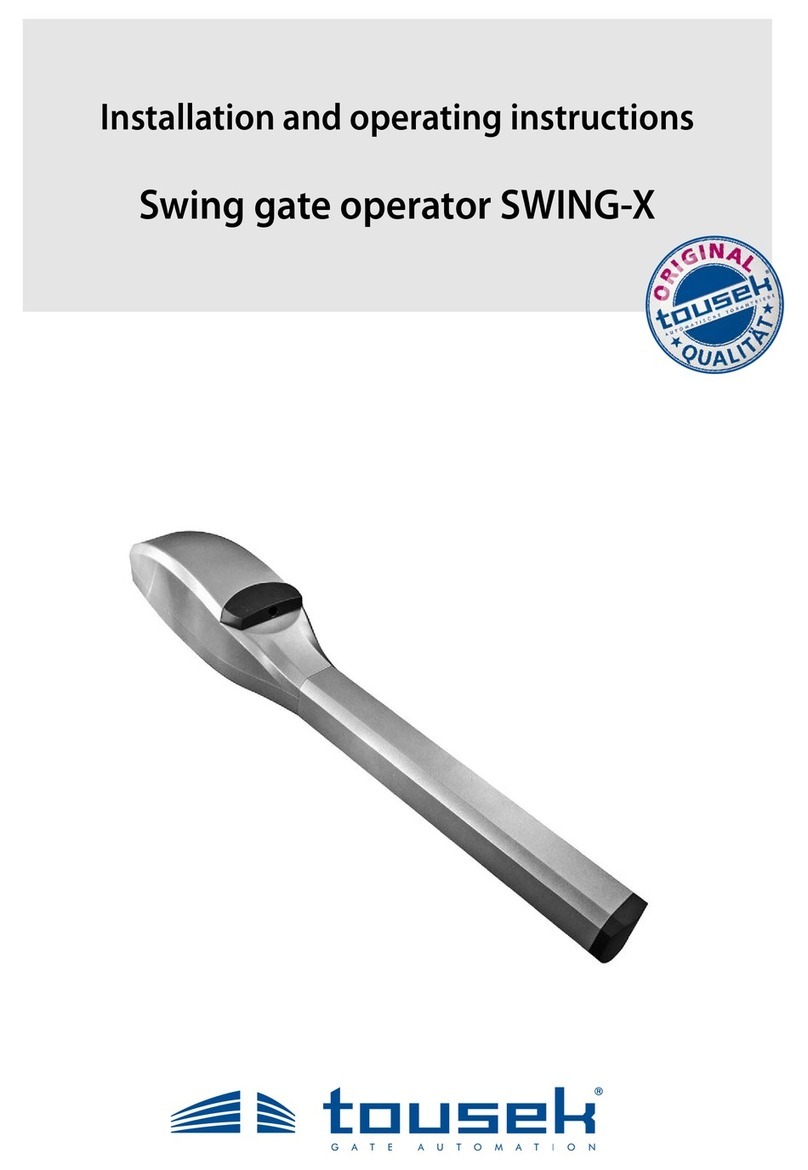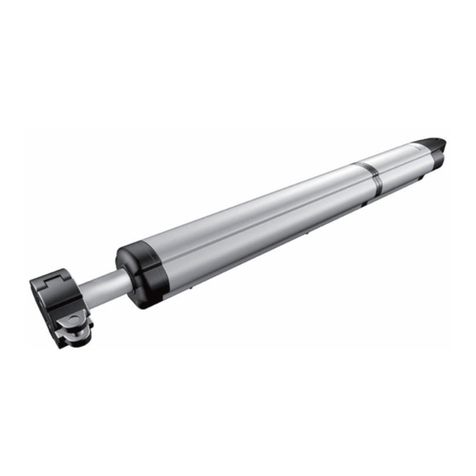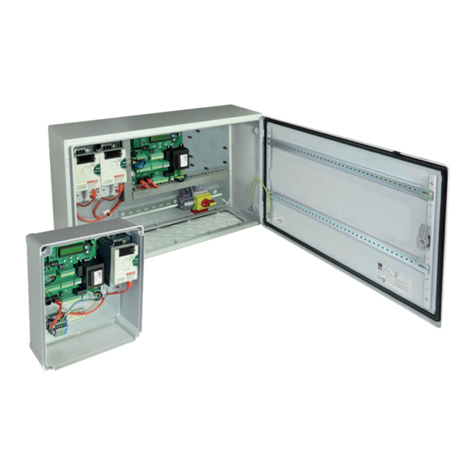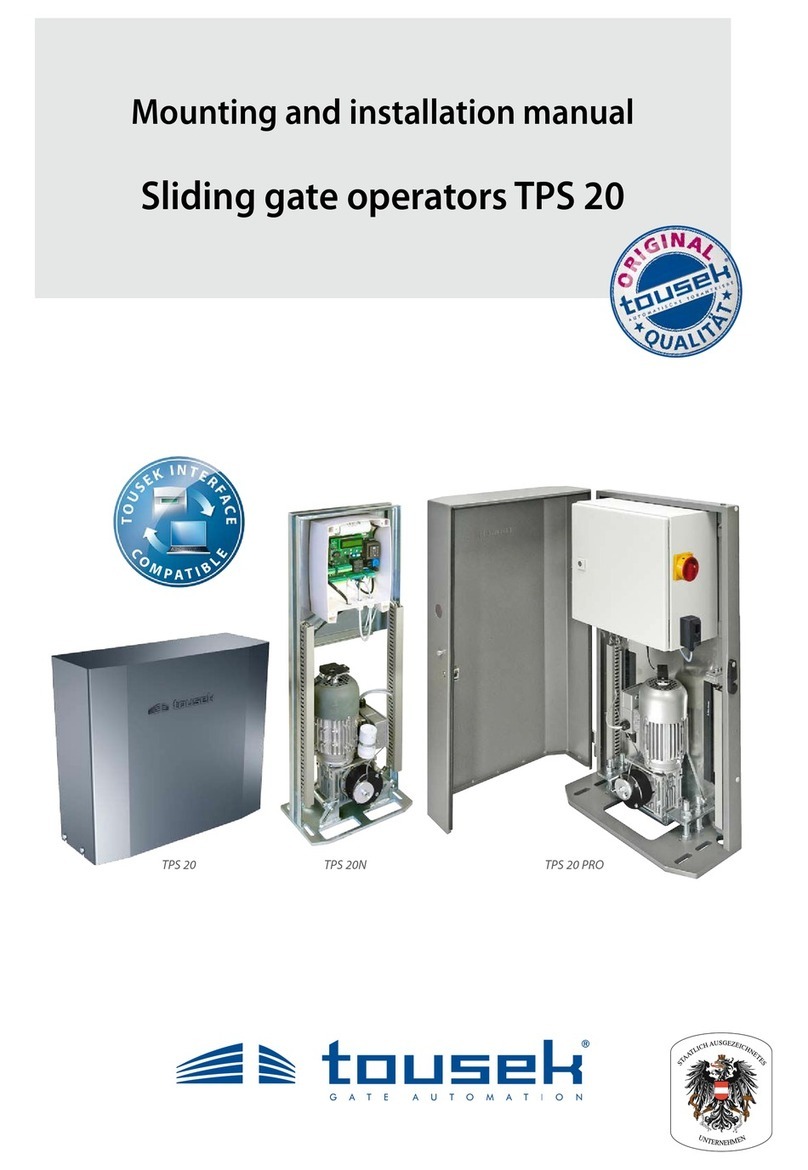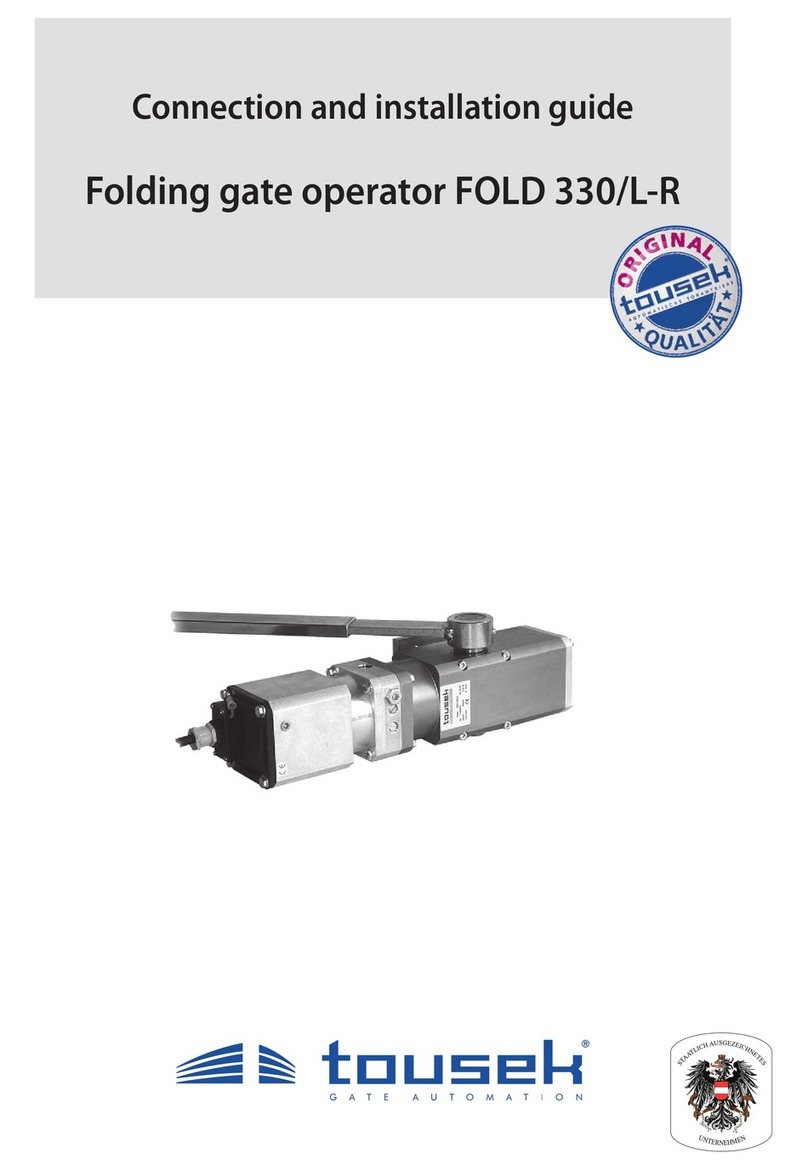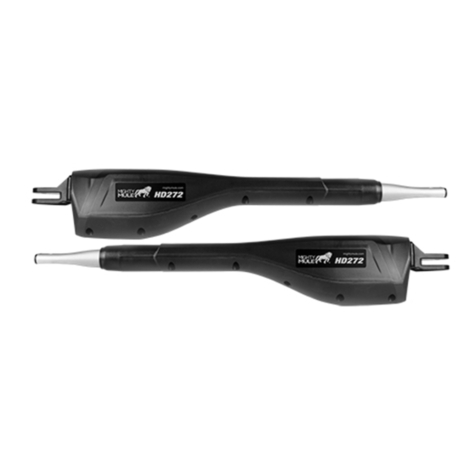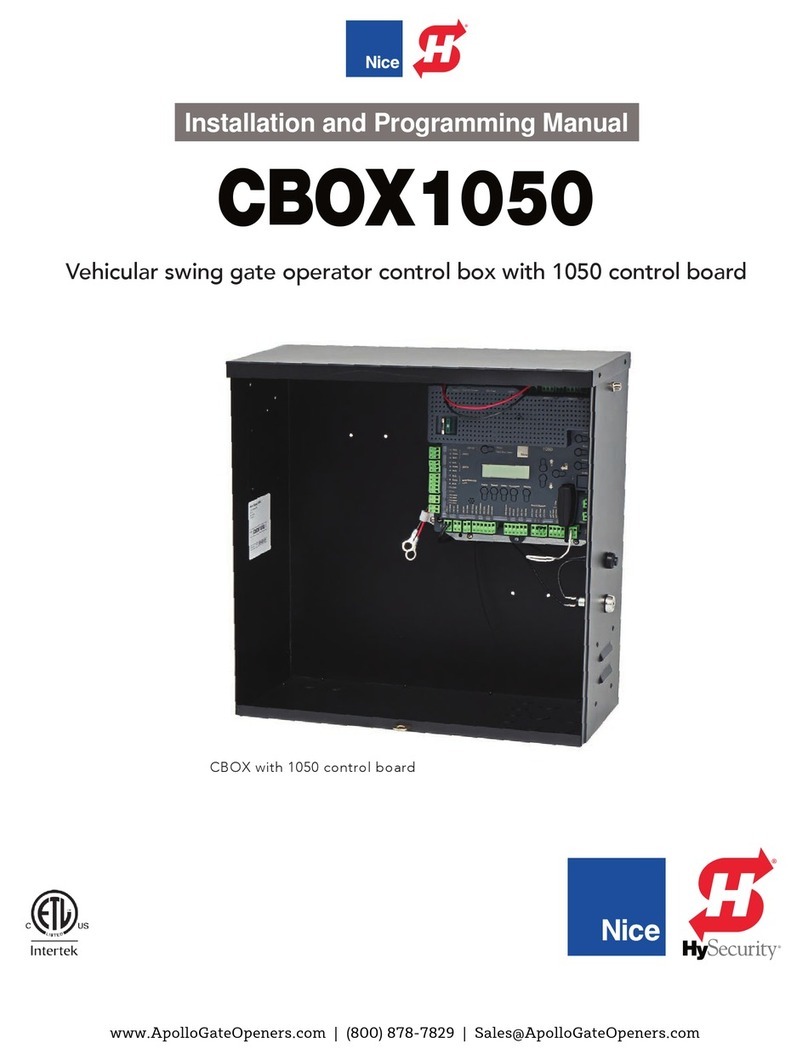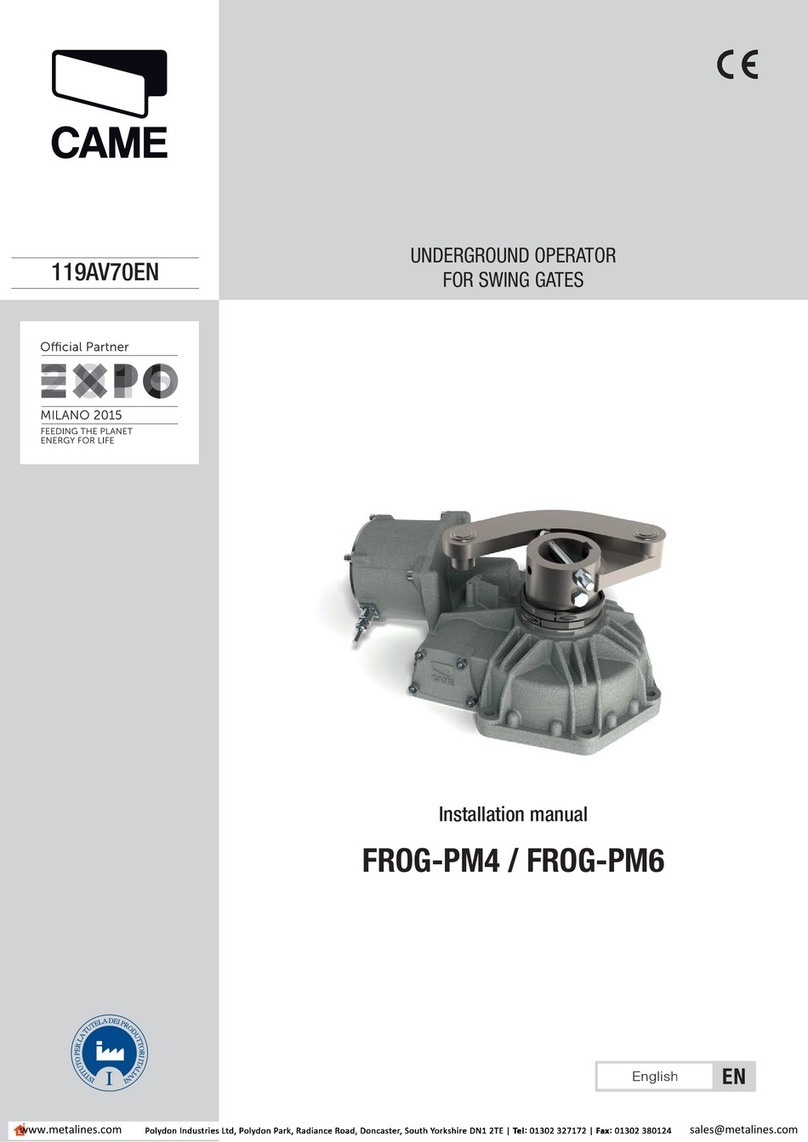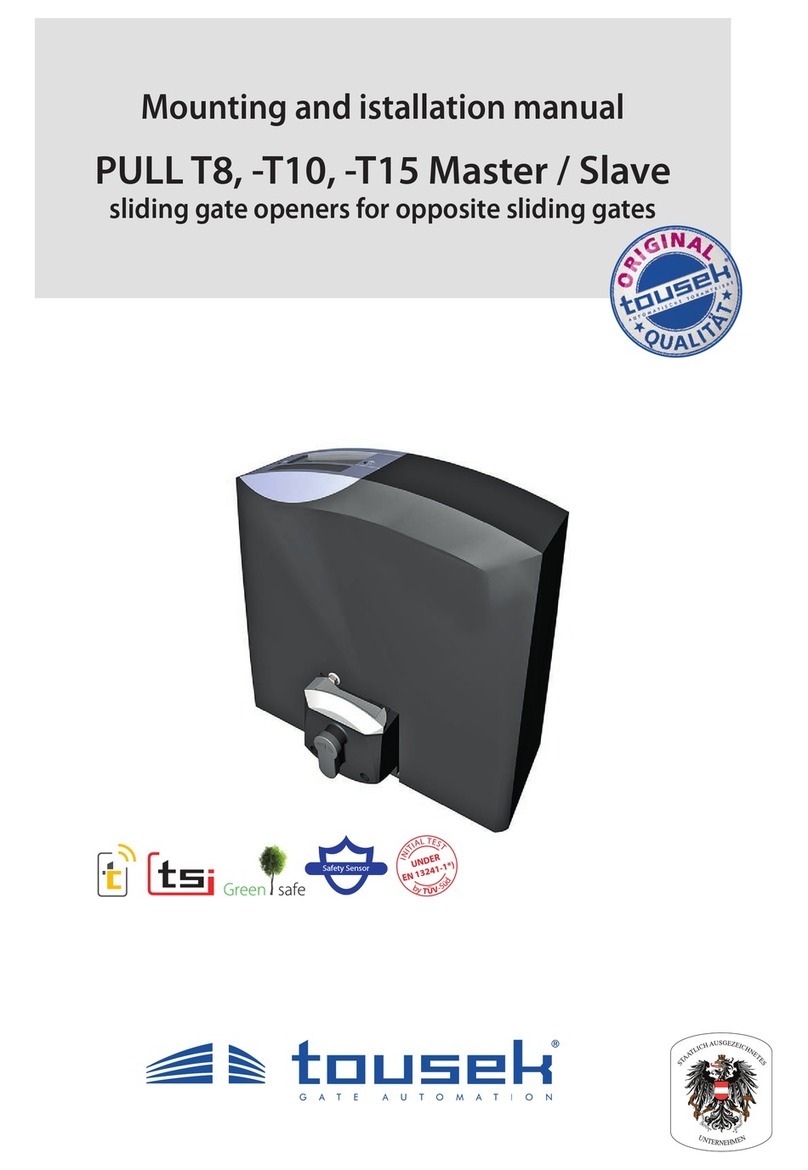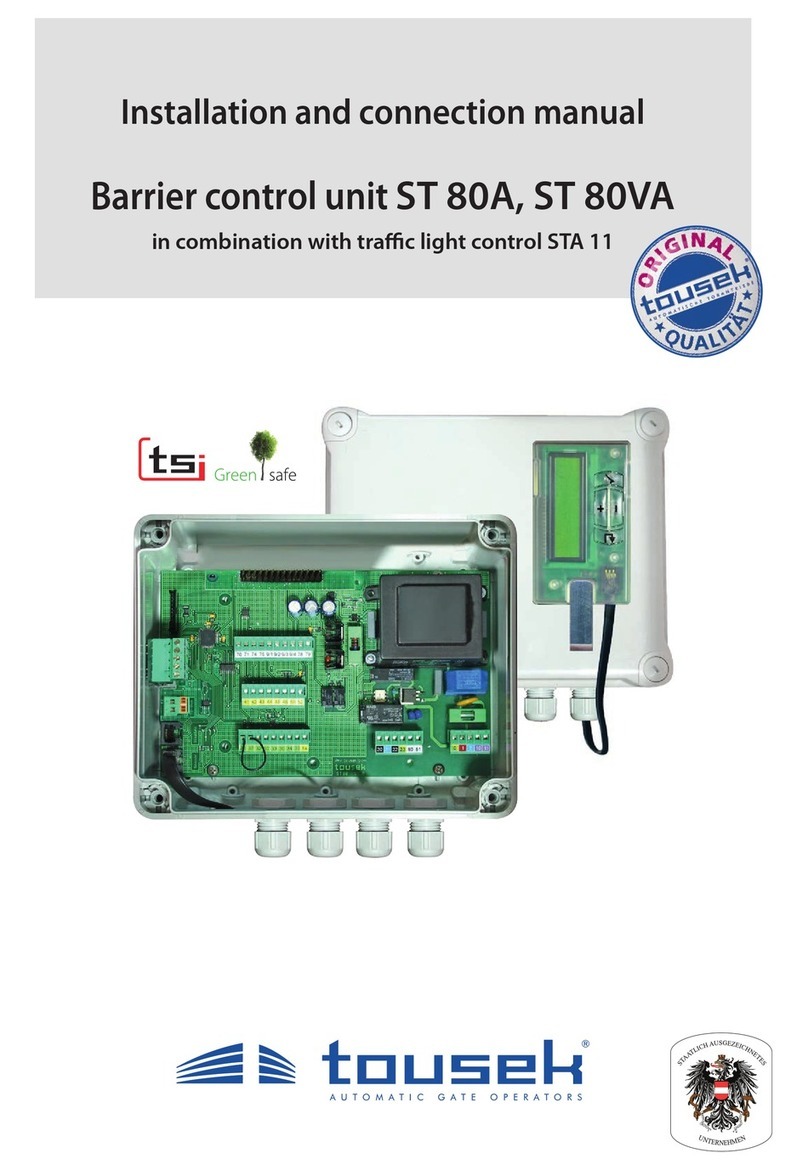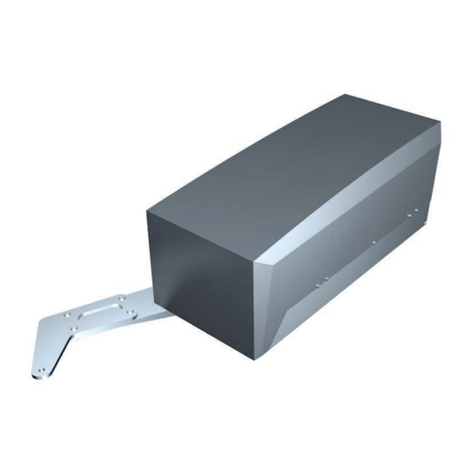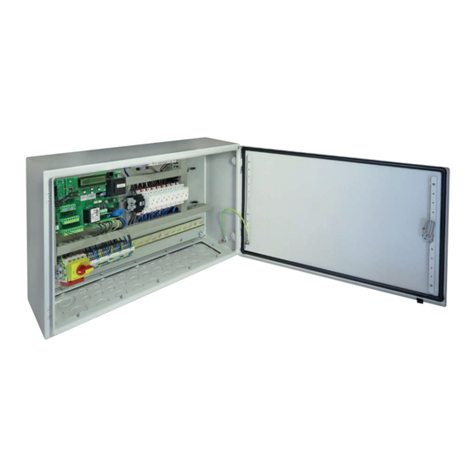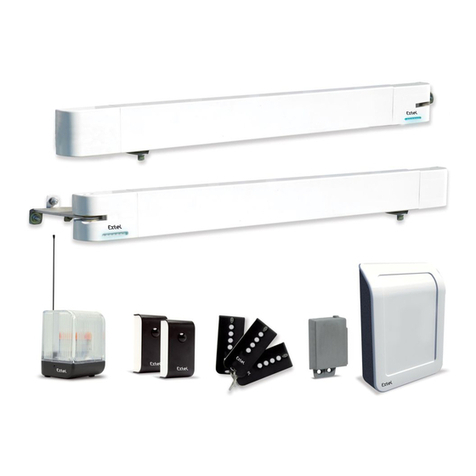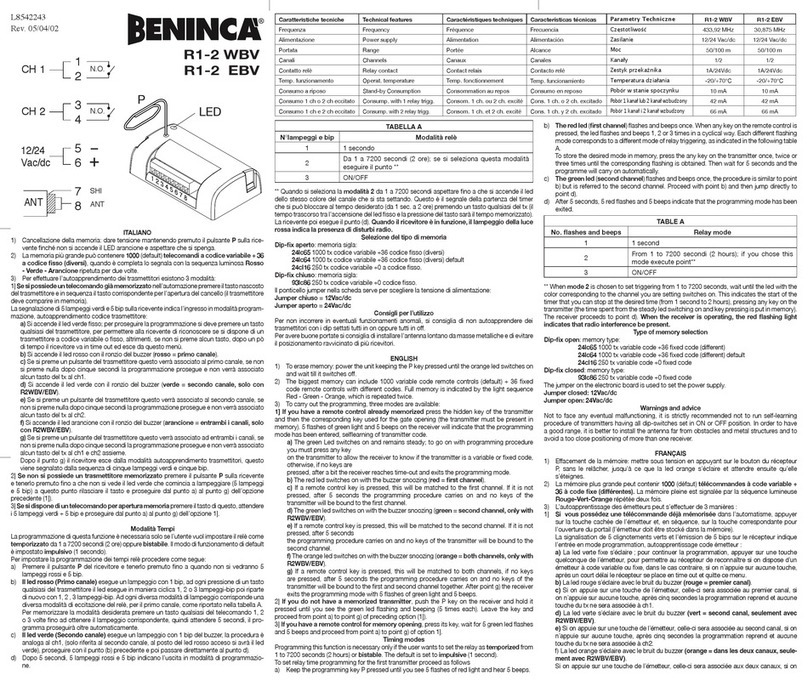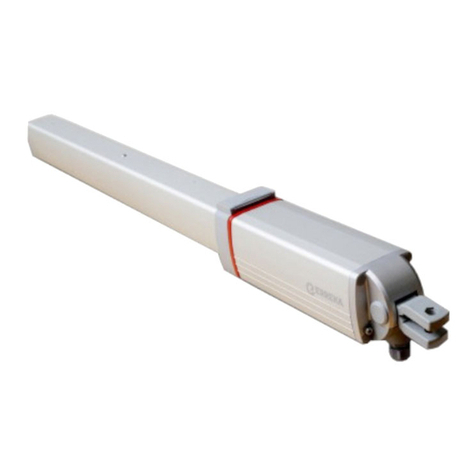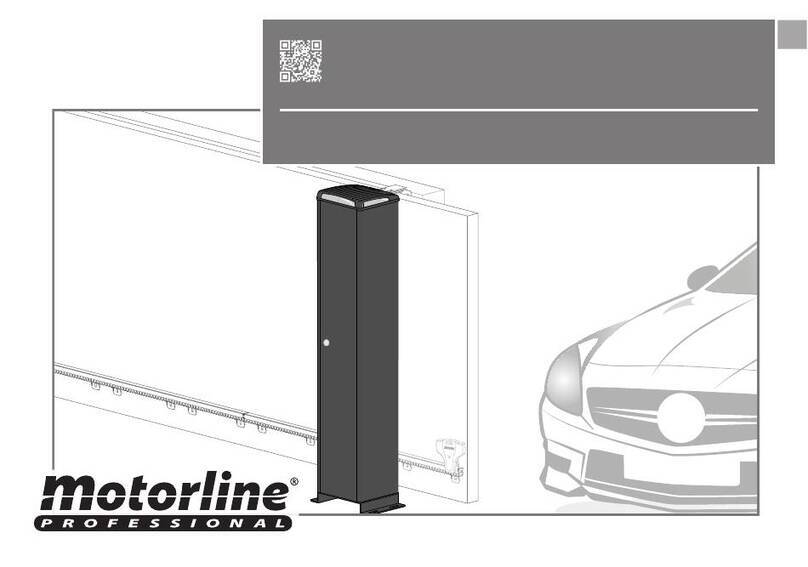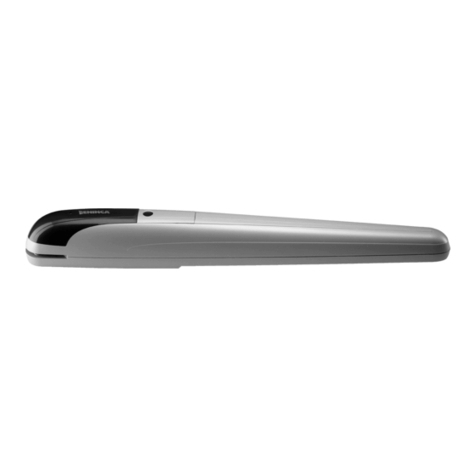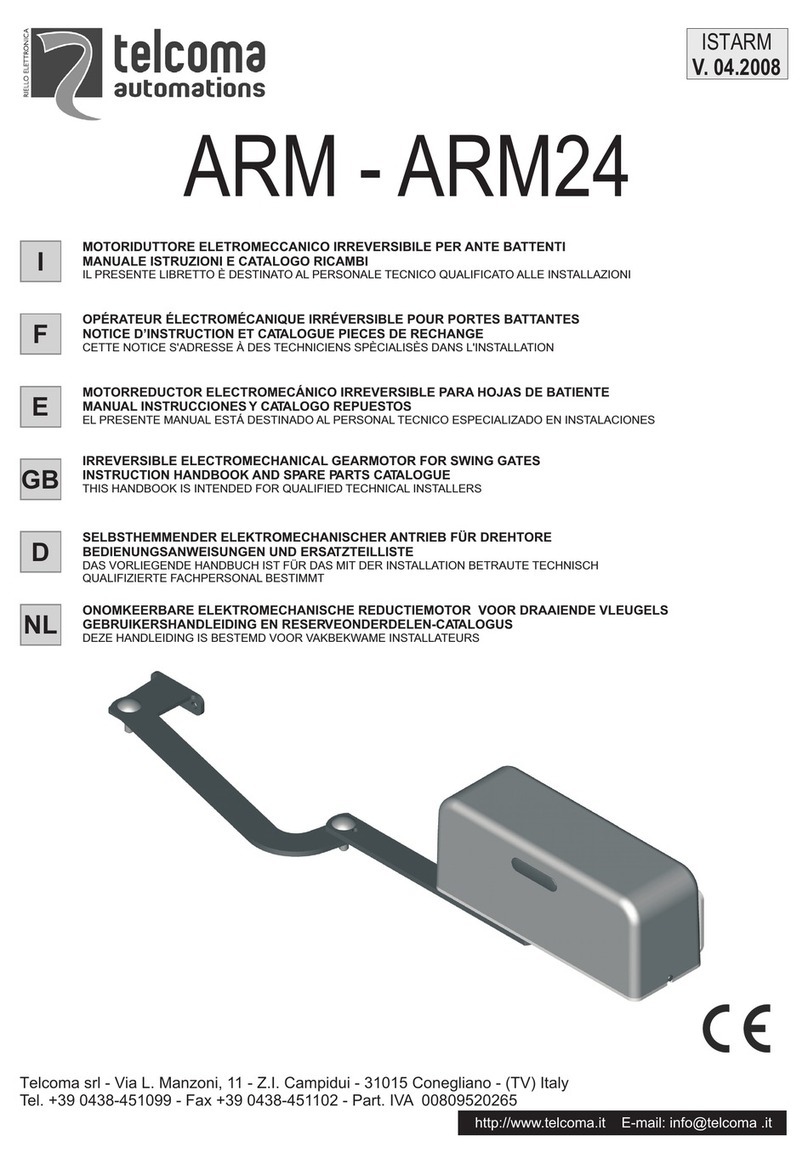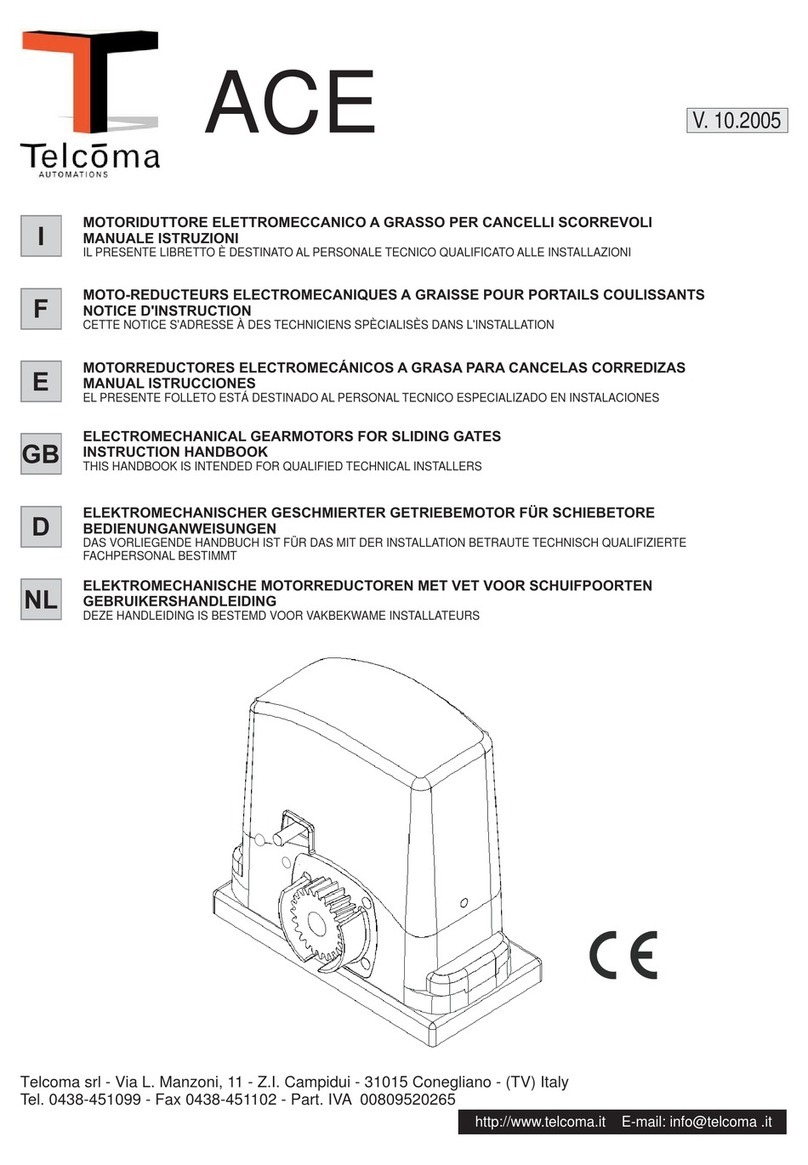
- 2 - tousek / EN_TPS-60-PRO_05 / 25. 03. 2020
This manual is the sole property of the TOUSEK Ges.m.b.H. and may not be made available to competitors. All rights reserved. No part of it may be reproduced without our prior
written permission. We will not accept liability for any claims resulting from misprints or errors. This edition of the manual replaces all earlier publications of the same.
Index
General warning and safety notes ............................................................................................................... 3
1. General product features, function, technical data TPS 60 PRO .............................................................. 4
2. Installation ...................................................................................................................................................... 5
Technical layout.......................................................................................................................................... 5
2.1 Mounting of the motor................................................................................................................................. 6
Mounting dimensions TPS 60 PRO............................................................................................................ 6
2.2 Mounting the fork for the power supply system (optional).......................................................................... 7
2.3 Mounting of the gear rack........................................................................................................................... 8
2.4 Limit switches and Emergency-Stop Button............................................................................................... 9
2.5 Dismantling................................................................................................................................................. 9
3. Control box .. ................................................................................................................................................ 10
Warning and danger notes - connection work .......................................................................................... 10
3.1 Layout of the contro box................................................................................................................................. 11
3.2 Limit switch module .................................................................................................................................. 12
3.3 Clamp/terminal assignment to terminal block X1 ................................................................................... 13
3.4 Settings - Overview, programming buttons, program menu, basic setting ............................................... 14
Menu structure.......................................................................................................................................... 15
3.5 Connections and adjustments.................................................................................................................... 16
Switches/buttons
r.......................................................................................................................................... 16
GImpulse switch (terminals X1: 30/32)........................................................................................................ 16
Pedestrian switch (terminals X1: 30/34).................................................................................................. 17
CLOSE switch (terminals X1: 30/33)....................................................................................................... 17
STOP-switch (terminals X1: 31/37) .......................................................................................................... 17
Safety............................................................................................................................................................. 18
GPhotocell (contact: terminals X1: 46/47)................................................................................................... 18
Photocell - connection examples ............................................................................................................. 19
GMain clos. edge (terminals X1: 50/52)................................................................................................... 20
GSide clos. edge (terminals X1: 50/51)..................................................................................................... 20
Photocell function ..................................................................................................................................... 20
Photocell with pause time......................................................................................................................... 21
Photocell test............................................................................................................................................ 21
Module status ........................................................................................................................................... 21
Motor ...................................................................................................................................................... 21
Speed OPEN .......................................................................................................................................... 21
Speed CLOSE ......................................................................................................................................... 21
Speed Soft Stop ..................................................................................................................................... 21
Soft stop distance OPEN ........................................................................................................................ 21
Soft stop distance CLOSE ....................................................................................................................... 21
End position OPEN................................................................................................................................... 21
End position CLOSE................................................................................................................................. 21
Operating logic............................................................................................................................................. 22
Impulse logic............................................................................................................................................. 22
GOpening direction ..................................................................................................................................... 22
GOperating mode........................................................................................................................................ 22
Partial opening.......................................................................................................................................... 22
Automatic mode ...................................................................................................................................... 22
Pause time logic ..................................................................................................................................... 22
Lamps / Lights.............................................................................................................................................. 23
Prewarning OPEN (signal lamp: terminals X1: 10/11)............................................................................. 23
Prewarning CLOSE (signal lamp: terminals X1: 10/11).......................................................................... 23
Signal contacts (signal contact K1: Kl. X1: 90/91, signal contact K2: Kl. X1: 92/93 ).............................. 23
Control lamp (terminals X1: 70/71).......................................................................................................... 23
Diagnosis ...................................................................................................................................................... 24
Status display, Delete end positions, Factory settings ................................................................................... 24
Software version, Serial number, Protocoll, Status Sensor............................................................................ 24
3.6 Other connections of TPS 60 PRO ............................................................................................................ 25
Decoupled impulse switch (terminals X1: 35/36)...................................................................................... 25
Induction loop inputs (terminals X1: 9/1, 9/2 - 9/3, 9/4)........................................................................... 25
4. I-loop detector (optional)............................................................................................................................. 26
5. Connection of radio receiver....................................................................................................................... 27
6. Commissioning ............................................................................................................................................ 28
7. Emergency release in case of power failure (note for the user).............................................................. 30
8. Error diagnosis............................................................................................................................................. 31
9. Cable plan ..................................................................................................................................................... 32
10. Dimensioned drawings TPS 60 PRO .......................................................................................................... 33
